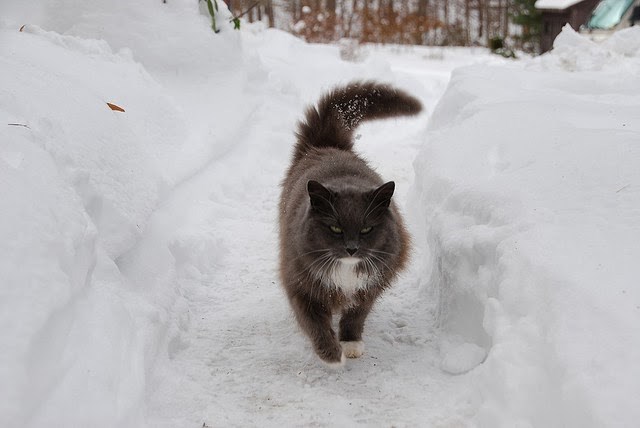It's COLD Outside:
Hypothermia in Pets
With the arctic temperatures this week, this blog post discusses hypothermia in pets - how to prevent it and how to treat it.
Hypothermia occurs when an animal's body temperature drops below the normal range. This may be due to both internal and external causes. Internal causes include shock, sepsis, organ failure (eg kidney or heart failure) and metabolic disease. External causes, which this blog focuses on, includes prolonged exposure to cold and/or wet weather. External causes of hypothermia can also lead to shock and organ failure and thus if a pet is found to be hypothermic, it is best to take him or her to see a veterinarian. Severe hypothermia can be fatal unfortunately.
Signs of hypothermia:
- Shivering and hunched over posture are commonly seen in hypothermic animals.
- Lethargy, confusion, unresponsiveness may develop if the pet is exposed to the cold environment for too long.
- Frostbite - cold and discoloured extremities (ear tips, paws, tail) with decreased sensation.
What to do:
- Move the pet to a warm, dry environment.
- Bundle the pet in warm, dry blankets or towels. You can put a towel in the dryer for 10 minutes to warm it up too. Please avoid using electric blankets, very hot blankets, or hot water it they may result in burns or damage to the skin. Using excess superficial heat also results in dilation of the blood vessels near the skin and can cause metabolic shock. Please do NOT allow your pet to lie directly on a heating pad - this may result in burns since most pets are unable to move if it becomes too hot. Instead, use towels in layers between a heating pad and your pet and set the heating pad to low.
- Call us or your local emergency clinic and prepare to bring your pet in for medical treatment. For severe cases of hypothermia, pets require active rewarming and IV fluids to prevent organ dysfunction and failure.
How to prevent hypothermia:
- Check the temperature, including the windchill, before you let your pet outside. Even if it doesn't seem too cold right now, when the wind blows it can disrupt the insulation provided by your dog's or cat's fur. If you think it's too cold, spend the day cuddling with your dog or cat on the couch instead!
- If your pet spends a lot of time outside, ensure they have appropriate shelter from the wind and snow. A sheltered area should also have insulation inside it, such as hay or straw that a dog or cat can burrow in for warmth if needed.
- A doggie jacket is beneficial to keep them warm on walks and while playing outside. Boots may also be beneficial as heat escapes through their paws. Boots also protect their paws from the salt outside.
Speaking of shelters, often outdoor cats will seek shelter inside the engine or underneath the hood of a parked car. It's warm and they are protected from the winds. It is recommended to always knock on the hood of your vehicle or honk the horn prior to starting it to ensure there are no cats sleeping around your car.
